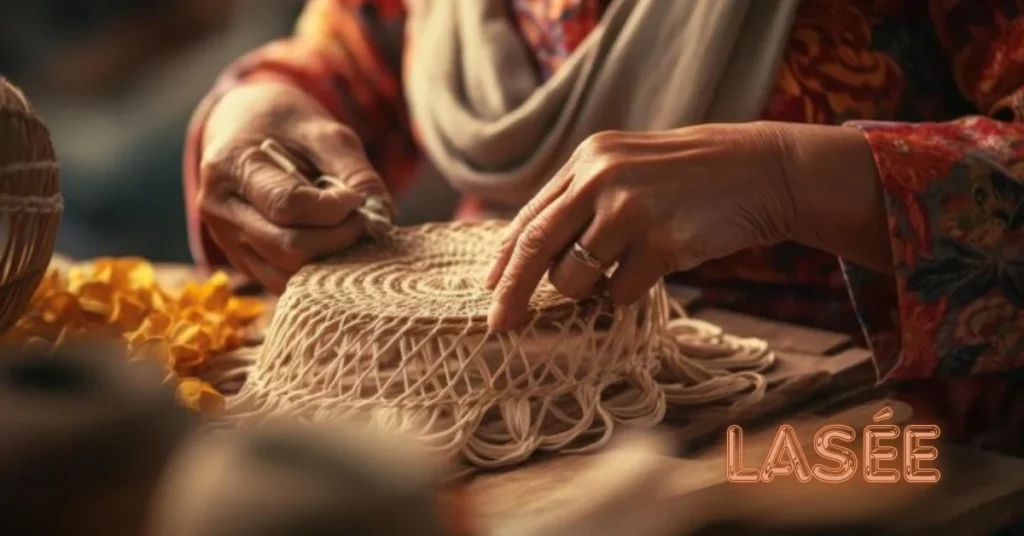Introduction to the Art of Lasée
Art has a unique way of telling stories, capturing emotions and reflecting culture. Among the myriad forms that grace our galleries and homes, one stands out with its rich heritage and vibrant expression: lasée. This captivating art form weaves together tradition and innovation, creating pieces that resonate deeply within us. As we delve into the world of lasée, we’ll explore its origins, techniques, themes, and how contemporary artists breathe new life into this age-old practice. Join me on this journey to discover what makes lasée not just an art form but a bridge between generations.
History and Origins of Lasée
Lasée has deep roots that trace back centuries. Originally emerging in specific cultural contexts, it reflects the values and beliefs of its time.
The art form was shaped by local traditions. It intertwined with rituals and daily life, making each piece a storytelling medium. Artists used Lasée to convey emotions and experiences unique to their communities.
As trade routes expanded, influences from different cultures began to seep into Lasée. This cross-pollination breathed new life into traditional techniques while preserving core elements.
Over the years, Lasée evolved but never lost its essence. Each generation added layers of meaning and style, keeping the tradition vibrant. Today’s artists stand on the shoulders of those who came before them, blending history with contemporary perspectives in fascinating ways.
Techniques and Materials Used in Lasée Art
Lasée art is a captivating blend of tradition and skill. Artists typically use various materials, each chosen for its unique properties.
Natural pigments are common. These colors evoke rich tones found in the environment. They enable artists to create depth and emotion within their pieces.
Brushwork varies from delicate strokes to bold applications. This flexibility allows individual expression while adhering to traditional methods.
Many practitioners employ special tools, like handmade brushes or stencils, enhancing precision. Such techniques can yield intricate details that draw viewers closer.
Texture plays an essential role too. Artists often layer materials to create tactile experiences on the canvas, inviting touch as well as sight.
Each choice reflects not only artistic intention but also cultural heritage, linking contemporary works back to ancestral practices in a vibrant dialogue through time.
Themes in Lasée Artwork
Lasée artwork often explores a rich tapestry of themes that reflect both cultural heritage and contemporary issues. Nature is a prominent subject, with artists capturing the beauty of landscapes, flora, and fauna in intricate detail. This connection to the environment serves as an homage to traditional ways of life.
Another common theme is community. Many lasée pieces highlight social gatherings, rituals, and familial bonds. These artworks celebrate togetherness and shared experiences.
Abstract concepts also find their way into lasée creations. Artists experiment with emotions like love, loss, or joy through innovative techniques that challenge viewers’ perceptions.
Spirituality plays a crucial role in many works. Symbolism often weaves its way throughout the art form, inviting contemplation on deeper meanings behind everyday scenes or objects. Each piece tells stories that resonate across generations while embracing modern sensibilities.
Modern Interpretations of Lasée
Modern interpretations of lasée breathe fresh life into this traditional art form. Artists today are exploring innovative techniques and materials, blending contemporary aesthetics with rich cultural heritage.
Some creators experiment with digital mediums, transforming classic motifs into vibrant graphic designs. Others incorporate mixed media, layering textures and colors that challenge the boundaries of conventional lasée.
Street artists have also embraced lasée elements, infusing urban settings with intricate patterns that invite public interaction. These bold reinterpretations keep the essence alive while appealing to a younger audience.
Collaborative projects between traditional artisans and modern designers are emerging too. Such partnerships foster a dialogue between generations, ensuring that the spirit of lasée continues to evolve without losing its roots in history.
Through these dynamic expressions, lasée remains relevant in today’s fast-paced world while captivating new admirers along the way.
Notable Artists and their Works in the Lasée Style
The world of Lasée art boasts a vibrant roster of talented artists who have elevated the form. One such luminary is Aline Dubois, known for her intricate layering techniques that breathe life into traditional scenes. Her use of color and light has captivated audiences worldwide.
Then there’s Malik Chen, whose contemporary twist on Lasée traditions pushes boundaries. His pieces often blend digital elements with classic techniques, creating dialogue between old and new.
Another notable figure is Sofia Ramos. She focuses heavily on cultural themes, incorporating symbols from her heritage that resonate deeply with viewers. Each brushstroke tells a story.
These artists exemplify how Lasée can adapt while maintaining its essence. Their innovative approaches inspire both emerging talents and seasoned practitioners to explore this dynamic art form further. The legacy of their contributions continues to shape the landscape of modern Lasée artistry.
Challenges and Controversies in Preserving Traditional Art Forms
The preservation of traditional art forms like lasée faces numerous challenges. Globalization often dilutes cultural uniqueness. Artists may feel pressured to adapt to modern trends, risking the authenticity of their work.
Funding is another significant hurdle. Many traditional artisans struggle to secure financial support for their crafts. Without resources, skills and techniques can fade away.
Cultural appropriation adds layers of complexity too. When elements of lasée are adopted without respect or understanding, it leads to controversy among communities. Authentic artists often voice concerns about misrepresentation.
Additionally, environmental factors come into play as well. Climate change threatens the natural materials used in lasée art—vital components that shape its identity and quality.
In a world obsessed with speed and efficiency, maintaining tradition requires deliberate effort and dedication from both artists and patrons alike.
Conclusion: The Timelessness of Tradition in the Art of Lasée
The beauty of Lasée lies in its ability to bridge the gap between tradition and modernity. As artists continue to explore this rich heritage, they breathe new life into age-old techniques while also embracing contemporary themes. The intricate designs and finely crafted pieces speak volumes about the culture from which they originate.
Lasée is not merely a relic of the past; it thrives as a living art form. This vibrant expression captivates audiences, both old and new, ensuring that its essence remains relevant in today’s world. Each brushstroke tells a story, connecting generations through shared appreciation for artistry.
As we look ahead, the challenge will be to preserve these traditions amid ever-evolving artistic landscapes. Yet, with each new interpretation and innovative approach by passionate creators, Lasée continues to shine bright—a testament to its timeless allure and enduring significance in our lives.
FAQs
What is Lasée’s?
Lasée’s is a brand renowned for blending rich textile traditions with contemporary fashion.
How does Lasée’s honor its heritage?
By incorporating centuries-old craftsmanship into modern designs, Lasée’s celebrates its historical roots.
What makes Lasée’s unique?
Its fusion of traditional artistry with innovative styles sets Lasée’s apart in the fashion industry.
What types of products does Lasée’s offer?
Lasée’s offers a range of textile and fashion items, each reflecting a blend of heritage and modern flair.
Why is Lasée’s significant in today’s fashion?
Lasée’s stands out for its ability to merge historic craftsmanship with contemporary trends, creating a unique fashion statement.







